Evolutionary Ecology
The department of Evolutionary Ecology gathers complementary skills in behavioural ecology, population dynamics, population biology, community ecology, and methodology (statistics and modelling). The research done in the department aims at studying how animal species evolve in a changing world by understanding the causes of the evolution of traits, adaptations and interactions. For that, we consider different levels of organization from individuals to populations and communities. Because organisms cannot be considered isolated from other biotic factors, we consider pathogens but also competing species within communities.
We study how individuals adapt to their environments that are largely impacted by anthropic pressures, and how life history traits and behaviour evolve in response to these pressures. Although we mainly focus on phenotype, we more and more consider the mechanistic link between the genotype and the phenotype. We develop the theoretical framework of our discipline through a conceptual and modeling approach. In parallel, we test hypotheses that arise from theoretical predictions through experimental, comparative and observational approaches on different biological models (insects, birds, mammals). Experimental approaches are developed in the laboratory (insect model) and in natura (bird, insect and mammal models). Observational and comparative research is mainly concerned with vertebrates. Our approaches are also, and increasingly, interested in the mechanisms of adaptive responses. In addition to the classical approaches of demographic analysis and trait change, methods of ecophysiology, chemical ecology and molecular biology are used.
Our department hosts several long-term studies of wild populations of different species. These long-term studies offer a valuable way to understand how biotic and abiotic factors affect individuals’ life history traits, and the functioning of populations in natura. Five populations of mammalian species are thus monitored for several years (more than 40 years on roe deer, 30 on Alpine marmots, 25 years on cats, 16 years on zebras, and 20 years on impala). Two of our study sites (La Sassière in Vanoise National Park (Alpine marmots) and Hwange National Park) have been certified as “Site d’Etude en Ecologie Globale” (SEEG), and two (ZA “Hwange” and ZA “Antarctic and sub-Antarctic”) were certified as “Zone Atelier” by the CNRS.
The department of Evolutionary ecology is also largely involved in training activities. Lastly, we also have strong socio-economic relationships. Indeed, because we address questions of major societal interest (global warming, public health) we tightly collaborate with socio-economic partners (Office Français de la Biodiversité, Vanoise National Park, Hwange National Park in Zimbabwe, Office National des Forêts, etc.) and participate to general public and media events.
Publications
Display of 1741 to 1770 publications on 2449 in total
Contrasted patterns of age-specific reproduction in long-lived seabirds
Proceedings of the Royal Society B: Biological Sciences . 276 ( 1655 ) : 375-382
Journal article
see the publicationHeterozygosity-Fitness Correlations Revealed By Neutral And Candidate Gene Markers In Roe Deer From A Long-Term Study
Evolution - International Journal of Organic Evolution . 63 ( 2 ) : 403-417
Journal article
see the publicationVariations in Sex Ratio Feeding and Fecundity of Triatoma dimidiata (Hemiptera: Reduviidae) Among Habitats in the Yucatan Peninsula Mexico
Vector-Borne and Zoonotic Diseases . 9 ( 3 ) : 243-251
Journal article
see the publicationEvolution of microparasites in spatially and genetically structured host populations: The example of RHDV infecting rabbits
Journal of Theoretical Biology . 257(2) : 212-227
Journal article
see the publicationRecombination and drug resistance in HIV: Population dynamics and stochasticity
Epidemics . 1(1) : 171-174
Journal article
see the publicationPreserving genetic integrity in a hybridising world: are European Wildcats (Felis silvestris silvestris) in eastern France distinct from sympatric feral domestic cats?
Biodiversity and Conservation . 18 : 2351-2360
Journal article
see the publicationGenetic markers in the playground of multivariate analysis
Heredity . -- : 1-12
Journal article
see the publicationRevealing cryptic genetic structuring in an urban population of stray cats (textit Felis silvestris catus
Mammalian Biology: Zeitschrift für Säugetierkunde . 74 : 2902-2912
Journal article
see the publicationMultiple colonisations of the western Indian Ocean by Pteropus fruit bats (Megachiroptera: Pteropodidae): The furthest islands were colonised first
Molecular Phylogenetics and Evolution . 51 : 294-303
Journal article
see the publicationMandible shape in hybrid mice.
The Science of Nature Naturwissenschaften . 96 ( 9 ) : 1043-1050
Journal article
see the publicationMandible shape in hybrid mice
The Science of Nature Naturwissenschaften . 96 : 1043-1050
Journal article
see the publicationRodent in changing environments
Kasetsart Journal Natural Science . 43 ( 1 ) : 83-93
Journal article
see the publicationHeritability of dispersal propensity in a patchy population
Proceedings of the Royal Society B: Biological Sciences . 276(1668) : 2829-2836
Journal article
see the publicationYolk androgens do not appear to mediate sexual conflict over parental investment in the collared flycatcher /Ficedula albicollis
Hormones and Behavior . 55 : 514-519
Journal article
see the publicationHeritable variation in maternal yolk hormone deposition in a wild bird population
The American Naturalist . 174(4) : 492-498
Journal article
see the publicationFactors affecting beech bark stripping by red deer (Cervus elaphus) in a mixed forest
Wildlife Biology . 15 : 187-196
Journal article
see the publicationEmpirical Evidence of Density Dependence in Populations of Large Herbivores
Advances in Ecological Research . 41 : 314-345
Journal article
see the publicationAge-dependent horn growth-survival relationship in wild sheep
Journal of Animal Ecology . 78 : 161-171
Journal article
see the publicationGenetic characterization of Toxoplasma gondii from wild boar (Sus scrofa) in France.
Veterinary Parasitology . 164 ( 2-4 ) : 296-300
Journal article
see the publicationInfluence of artificial lights logs and erosion on leatherback sea turtle hatchling orientation at Pongara National Park Gabon
Biological Conservation . 142 : 85-93
Journal article
see the publicationAssessing the effect on survival of natal dispersal using multistate capture-recapture models
Ecology . 90(10) : 2902-2912
Journal article
see the publicationSperm competition and brain size evolution in mammals
Journal of Evolutionary Biology . 22 ( 11 ) : 2215-2221
Journal article
see the publicationSperm depletion, male mating behaviour and reproductive ‘time-out' in Gammarus pulex (Crustacea, Amphipoda).
Animal Behaviour . 77 : 49-54
Journal article
see the publicationEcology and life history evolution of frugivorous Drosophila parasitoids
Advances in Parasitology : Parasitoids of Drosophila . 70 : 381 p.
Book chapter
see the publicationEcology and Life History Evolution of Frugivorous Drosophila Parasitoids
Advances in Parasitology . 70 : 6-35
Journal article
see the publicationPhenotypic plasticity of abdomen pigmentation in two geographic populations of TexitDrosophila melanogaster: male-female comparison and sexual dimorphism
Genetica . 135(3) : 403-413
Journal article
see the publicationPatterns biogéographiques de la diversité bactérienne des sols à l'échelle du territoire national
Congrès AFEM (Association Francophone pour l'Ecologie Microbienne . : n.p.
Conference paper
see the publicationMicrobial-biogeography at the scale of France by the use of molecular tools applied to the French soil quality monitoring network (RMQS)
BAGECO10 .
Conference paper
see the publicationPrédiction des propriétés du sol à l’échelle nationale à partir des données du RMQS : Exemple des Éléments Trace Métalliques
10. Journées d'Etude des Sols .
Conference paper
see the publicationDiversité des communautés microbiennes telluriques à l'échelle du territoire national
Journées d'Etude des Sols . : 151-152
Conference paper
see the publication
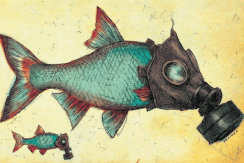
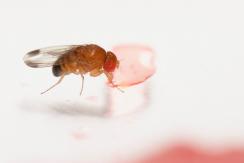
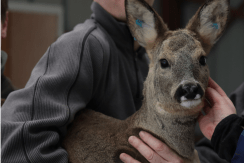
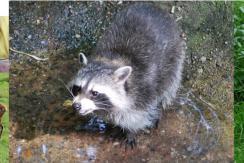
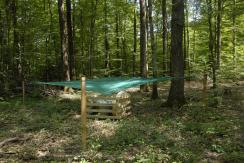
You also, comment on this article